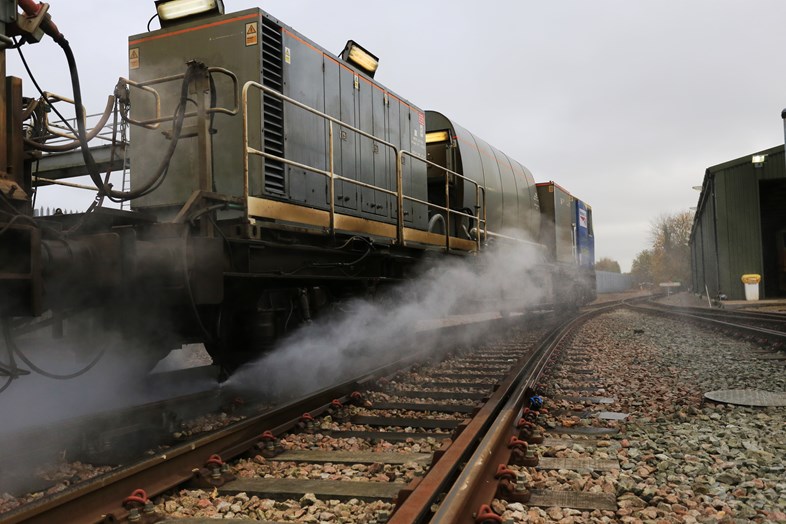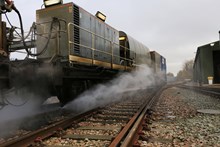Network Rail and Southeastern work very hard to ensure trains run safely through the worst of the weather, with safety systems and special timetables helping to keep the railway run reliably.
When a train wheel runs over autumn leaves, it squashes them into a paste. As the following wheels of the train roll over the mess, it quickly bakes hard into a tough black coating – the black ice of the railway. Add rain into the mix, and there is a serious risk that a train will lose grip, either unable to accelerate or worse, unable to stop. And if the leaf-paste goes unchecked, it can insulate the trains from the tracks, making signalling safety systems fail safely.
By working together, Network Rail and Southeastern can make sure that doesn’t happen and that trains can run on time throughout the autumn and winter.
Network Rail runs special engineering trains around the clock to clear leaves from the line while Southeastern trains equipped with sanders lay a coating of dry sand on the rail, giving the train extra grip. Drivers also spend additional time in train simulators, practising driving in challenging autumn and winter conditions.
Network Rail’s chief operating officer Andy Derbyshire said: “Leaves on the line are not a joke, they are a real risk, never mind the delays they cause, and each year our trains run more than 180,000 miles on a 24/7 programme of rail treatment to keep lines clear.
“Our fleet of 19 special engineering trains run across the South East all day every day, blasting the rails clear with water jets – powerful enough to cut through the contamination left by the leaves on the top of the rail - and laying a sandy gel that helps trains grip better.
“But even with those trains running around the clock, on bad days where we have lots of wind and rain, it can be a challenge to operate as punctually as we would like. That’s where we have to work very closely with Southeastern.”
Ellie Burrows, Train Services Director, Southeastern said: “The complexity of our network and the sheer number of trains we run – more than 2,000 each day – means that small delays of a few seconds along the journey can quickly add up becoming big delays at the destinations.
“To ensure safety and provide reliability, we run an amended timetable in the autumn months. This means that some trains take slightly longer to reach their destinations, we operate a special off-peak only timetable in Metro areas when the weather is particularly bad. This is how we make sure that every train and crew is in the right place to run a reliable service. We also make sure our drivers spend additional time on our training simulators to practice accelerating and breaking when rails are slippery.
“We really appreciate our passengers’ patience and understanding, along with Network Rail, our priority is getting everyone to and from work reliably and safely during these months.”

